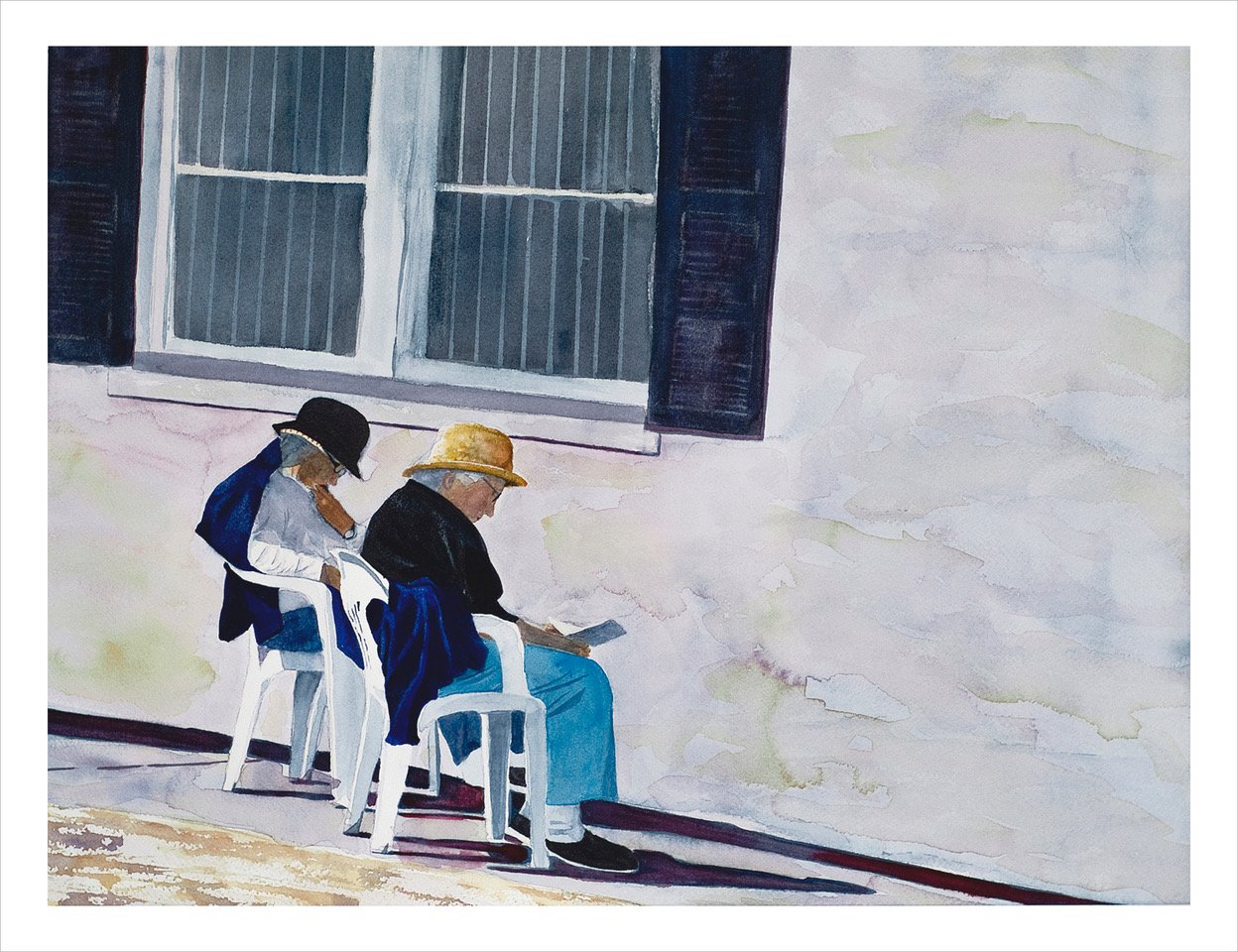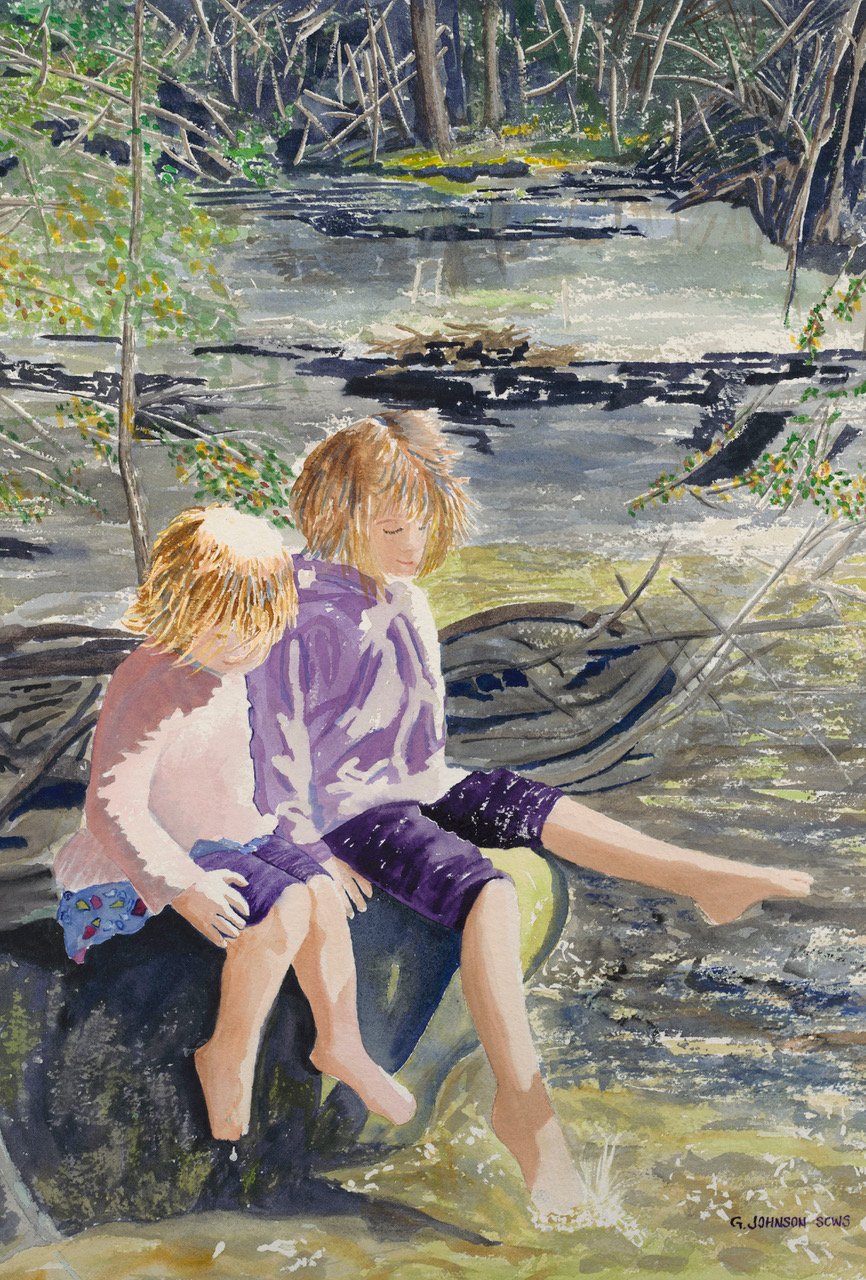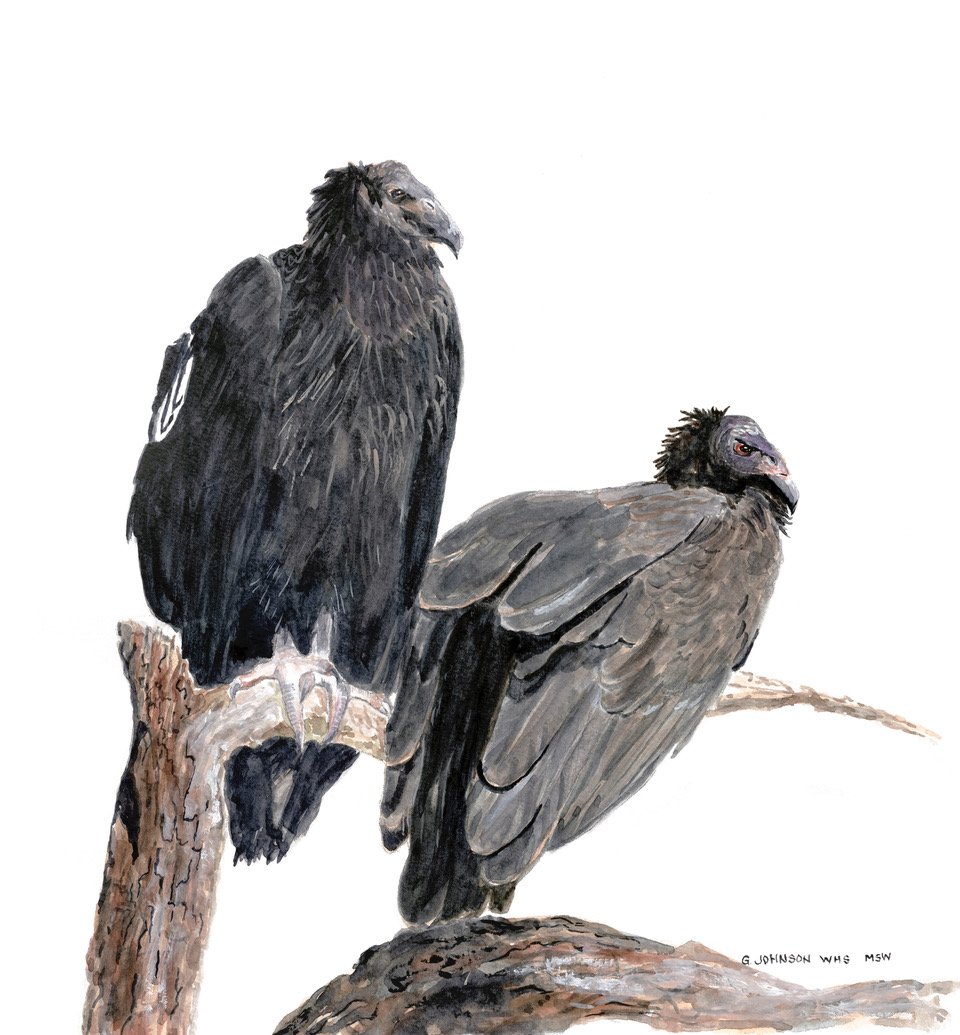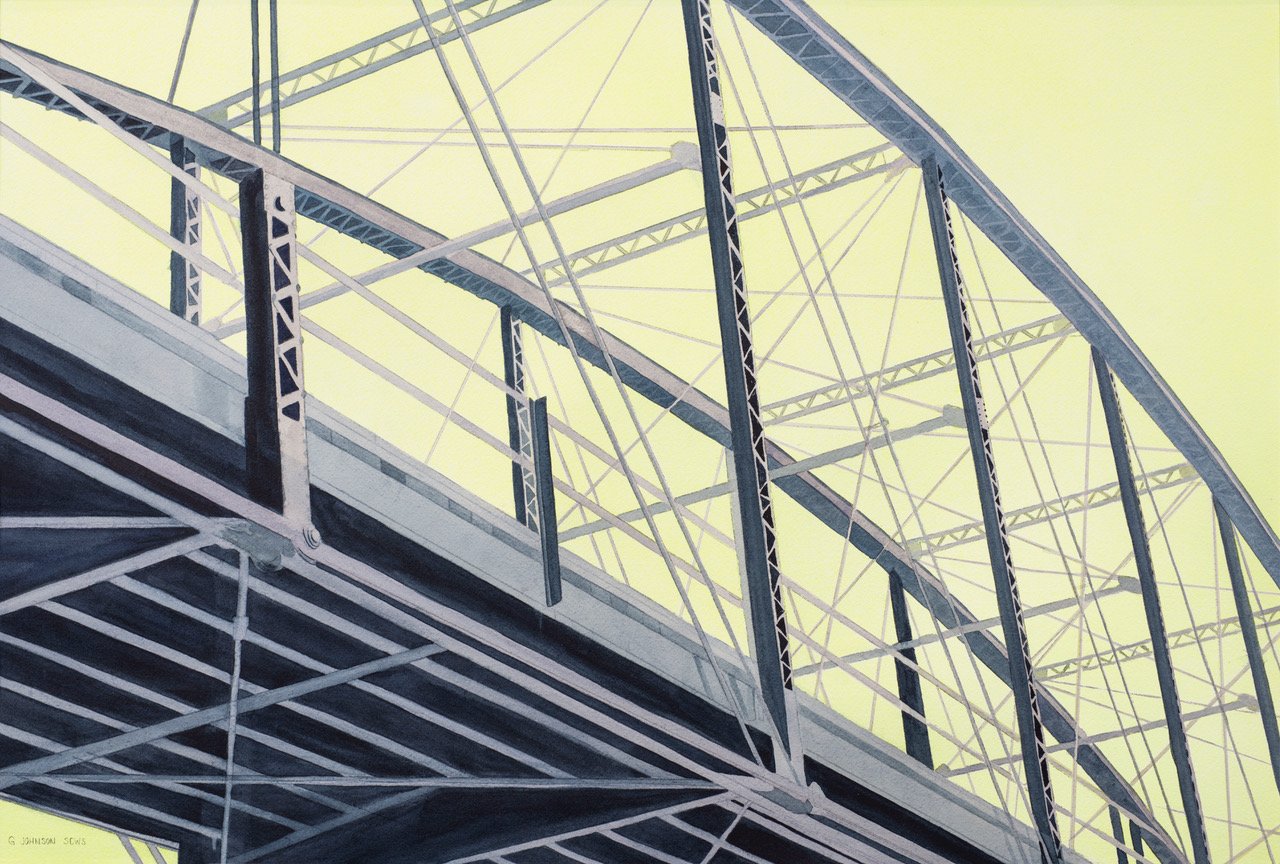Interview with artist Gary Johnson
Gary Johnson is a watercolorist living in Fayetteville, Arkansas. Painting became his retirement career after he fell in love with the medium and its challenges. Gary has always been up for challenges, and it shows in his exploration of realism to nonobjectivism. His works have been shown throughout the United States, China and Europe. Among his many accomplishments as a painter, Gary has earned Signature Member in Excellence status in the South Carolina Watermedia Society, Diamond Signature status in the Mid Southern Watercolorists, and Signature status in the Kentucky Watercolor Society and the Watercolor USA Honor Society. More of Gary’s work can be found at Art Emporium in Fayetteville,, Art Collective Gallery in Rogers, and Artists of Northwest Arkansas Gallery in Rogers, and at his website garyjohnsonfineart.com.
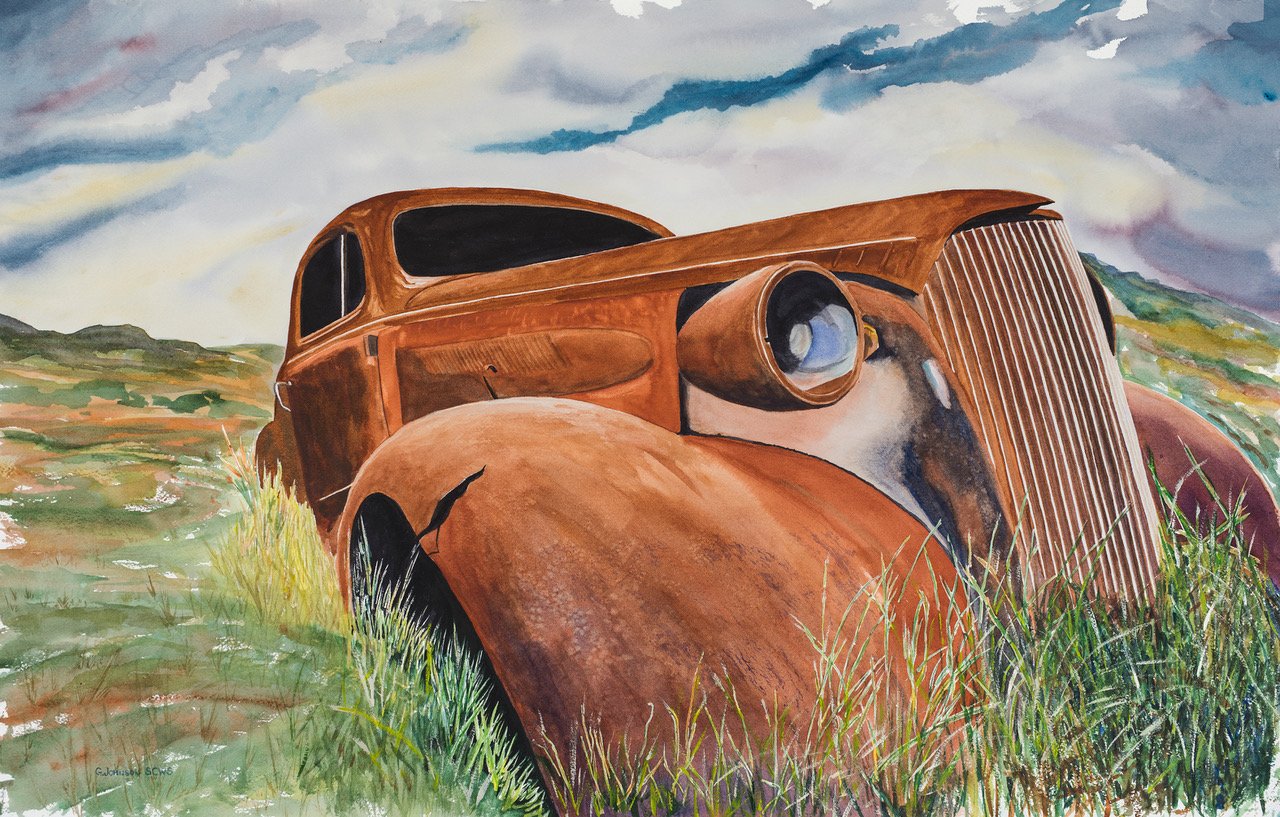
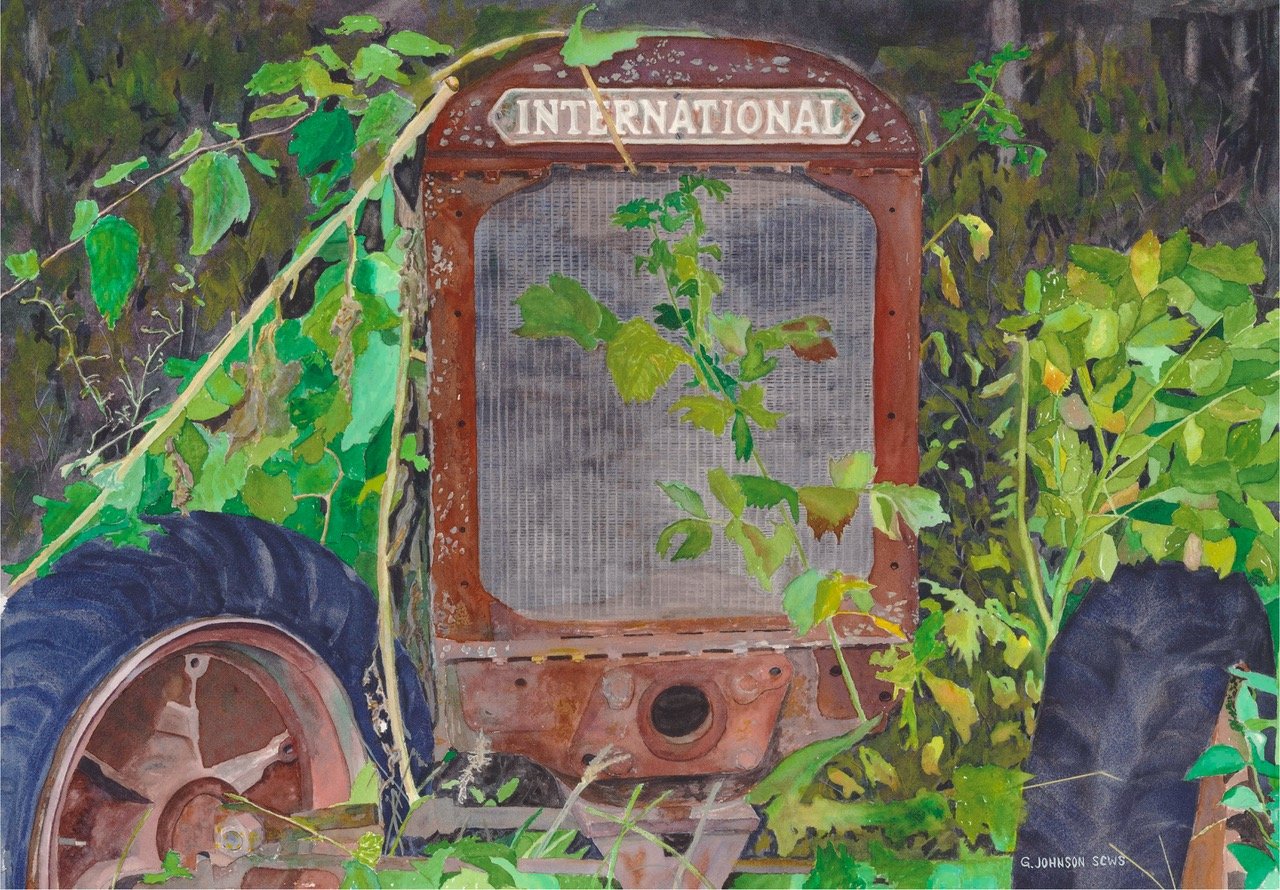
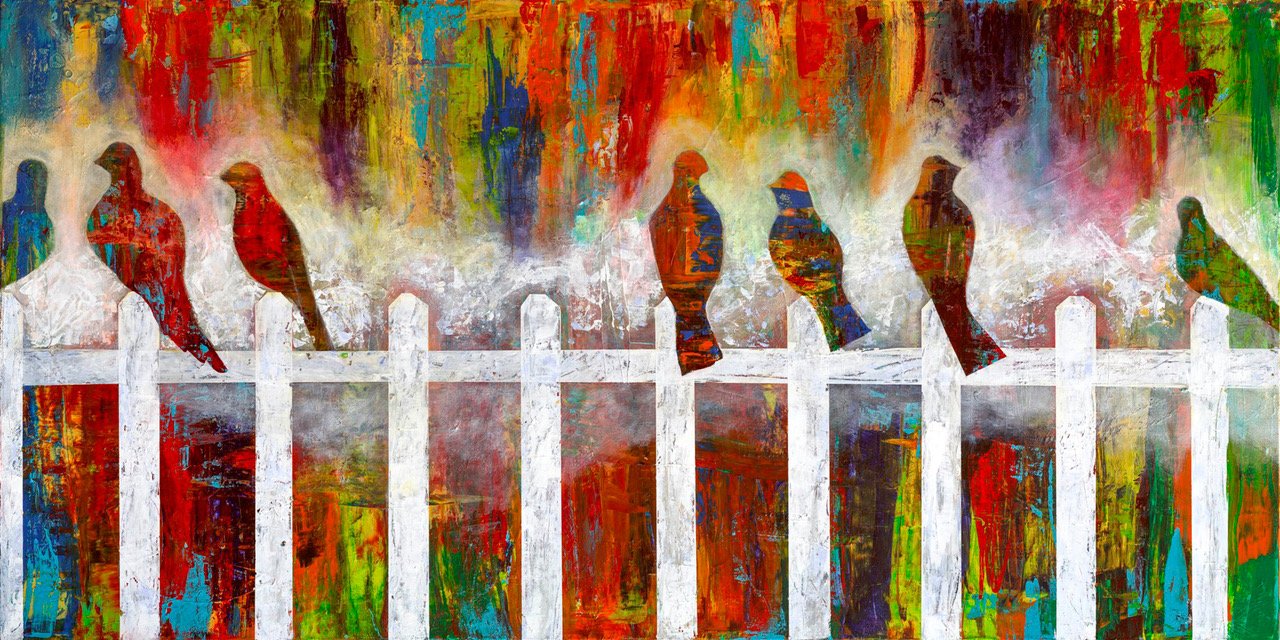
AAS: Gary, are you a native Arkansan?
GJ: Well, no I’m not a native Arkansan; however, I love living in NW Northwest Arkansas as much as anyone who might be a native. Actually, I grew up in a town called Rock, Michigan in the Upper Peninsula. After graduating from high school, I enrolled in the Michigan College of Mining and Technology now known as Michigan Technological University where I gained a BS degree in Mechanical Engineering. I then completed a Master’s in Business at Loyola University Chicago. With my education, I was fortunate to work in many different industries from commercial food service equipment to electronics, to lighting. After moving all over the US, New Jersey, IIllinois, Arizona twice, California, Georgia, Washington, and finally South Carolina, I decided that retirement looked pretty good. My wife and daughter decided we should live close to my daughter in Northwest Arkansas and so here we are, close to family and grandchildren.
AAS: Why did you start painting?
GJ: I took it up as a challenge. I always thought I could paint and told my wife as much. She just grinned and said, “Not in my lifetime.” Well, I took a short watercolor class back in 2002 and began painting. Needless to say, it took several years of working at the medium before creating anything worth hanging, let alone something my wife would want. That’s now history after 20 years of learning how to work with the medium. The more I paint, the more I love it. Further, I didn’t realize when I started that it would become a lifelong love affair. I guess I started because of the challenge and then continued because it gave me something to look forward to in retirement other than golf. It turns out I can paint far longer than I can play golf, but that’s another story for another time.
AAS: I want to ask you first about Shadows From A Bygone Era. I like architectural/mechanical paintings and this one is so interesting. The complexity of the form and color are almost hypnotizing. Tell me about it.
Shadows From A Bygone Era, 21” x 21”, watercolor
GJ: As an engineering grad, this old steam driven engine fascinated me when I discovered it in Eureka Springs at an old railroad yard. I photographed it from many different angles and selected this one where the sun had cast a great many shadows onto it and went on to paint it. I loved the shadows within the piece, hence the name Shadows from a Bygone Era. I also liked the complexity of the overall device with the various pushrods being driven by steam driven motors. Considering its age, I felt lucky to run across it and paint it for posterity. The painting was first exhibited in a small regional show in Fayetteville for the Artists of Northwest Arkansas. I then entered the piece into the Mid Southern Watercolorists Annual Member Exhibition and was delighted to win the Bronze Award that year. I then sold the piece to an architect in Fayetteville before learning it had been selected to be in an international exhibition in Barcelona, Spain.
AAS: A piece equally intricate but with a totally different treatment is Rhapsody in Blue. Are there specific watercolor techniques needed to create such an impressive painting?
Rhapsody in Blue, 18” x 18”, watercolor
GJ: I guess there weren’t any real specific watercolor techniques used to paint this piece. It did, however, require many days of drawing to capture the intricate detail of the pieces involved before starting to paint. I only used three different colors of blue during the process that came close in color and value to the real pieces of ginger jars and serving plate. These beautiful pieces were collected by my wife over a period of years, and I hadn’t really painted many still life paintings over the years and wanted to make sure I could paint one with so much detail. It was one heck of a challenge and during the process I marveled at the people who painted the original pieces and wondered how they could do this day in and day out - I often needed to stop and rest my eyes.
AAS: Although you consider yourself a self-taught watercolorist, you have studied with many major watercolor artists and even teach classes now yourself. What do you think are some of the most important or most useful things you have learned while studying with these accomplished artists?
GJ: Yes, I’ve been lucky to study under several really great artists over the years. They’ve all been great in sharing the many unique tips and techniques they use in creating their wonderful works. John Salminen is one that I will always remember saying that “I have never stopped learning. I’ll never exhaust my love of the medium and the satisfaction I derive from the intellectual and emotional challenges of watercolor painting.” To me, those words sing.
I think another thing I learned in life is that goal setting is invaluable. It’s one of the reasons I now have achieved signature status in many art organizations. I set a goal early on in my career to just get into a juried exhibition. From there I wanted to acquire a signature, etc., etc. It worked, and I recommend to everyone to set goals for themselves.
I think another thing I’ve learned from them is that to improve your own skills, teach art to someone else. You have to study hard to teach art and the techniques used to make a good painting. So, I’ve undertaken teaching workshops and short classes to senior citizens who have never painted before. Believe me, you learn more about painting watercolor by teaching it to someone who knows nothing about how to do it. You have to spend a great deal of time in preparation to teach it. I feel I’ve improved my own work tremendously by teaching it and getting asked questions I would never have thought about.
AAS: You have travelled and worked all over the world, so I assume your surroundings influence your work. Tell me about Cotton Gin. I think it is an outstanding painting – congratulations.
Cotton Gin, 14” x 18.5”, watercolor
GJ: As my wife and I were driving to Phoenix for the Fiesta Bowl football game this past year, I noticed this wonderful structure just east of Amarillo, Texas. I commented to my wife to remember where we passed it so I could photograph it on our return trip to Fayetteville the next week. Driving by it made me think “there is a painting waiting to happen”. As we returned home, we stopped and photographed it from several different angles. I have always loved rusted structures, cars, pickup trucks, etc. and this building fit the bill. It had that timeless patina to it that only passing time gives to structures and machinery as well as the geometric angularity of the structure itself and it’s ancillary outbuildings. Located in Groom, Texas, this since abandoned cotton gin stands as a monument of a time, in the recent past, that was associated with the cotton industry in the US.
AAS: When I look at your varied body of work, I get a sense of exploration and experimentation. Is that how you live your life?
GJ: As an engineer, I was always seeking new and innovative solutions to problems. Now as a painter, I continue to seek out new methods to paint something that is fascinating to me. I suppose the nonrepresentational abstracts truly challenge me the most since there is no identifiable object that is being placed into the painting. I utilize design elements and principles to lead me where the painting wants to go. Most of my abstracts start with some form of line drawing that I’ve learned from the great one, Salminen. I utilize line and shape as well as color and the values within those colors along with texture, which to me, enriches a painting’s surface eliminating monotony. I also utilize the principle of dominance. Color and shape dominance are always on my mind when working in the abstract genre. I often make trade trade-offs with value and texture to enhance a painting’s center of interest and to create movement toward that goal of bringing ones eye where I feel it should be directed. One must be careful not to overdo texture in a painting. I try to use the theory that if it gets to be too much fun, then it might be on the verge of overdoing it. Something I learned again from Salminen and Kathleen Conover.
AAS: I want to ask you about your abstract paintings. Eternal Spirit is one of my favorites. I think it is a great example of your choice of color and use of line. Tell me about it and does it take a totally different mindset to switch from painting still lifes or landscapes?
Eternal Spirit, 22” x 22”, watercolor
GJ: Painting abstracts is a very different ballgame. I find it to be the most challenging kind of painting as you have no specific object that the viewer can relate to as in a landscape or still life. There is no rusty car, there is no mountain or lake, there is no person to see in an abstract. You have to make the person looking at your painting ask the question, how did he do that, or what was the artist thinking about when he used those colors, textures, shapes and lines to make me look at his work. In Eternal Spirit the vibrancy and transparency of watercolor comes through in spades. You can’t find the colors developed in this painting right out of a tube. The colors are developed through many layers, one on top of another, and that’s the beauty of transparent watercolor. The curvilinear lines in the painting helped to augment the visual direction and movement within the painting. There are multiple lines, be they thin or thick; almost to the point where you have to ask yourself is it a line or is it a shape. That I leave to the viewer to decide.
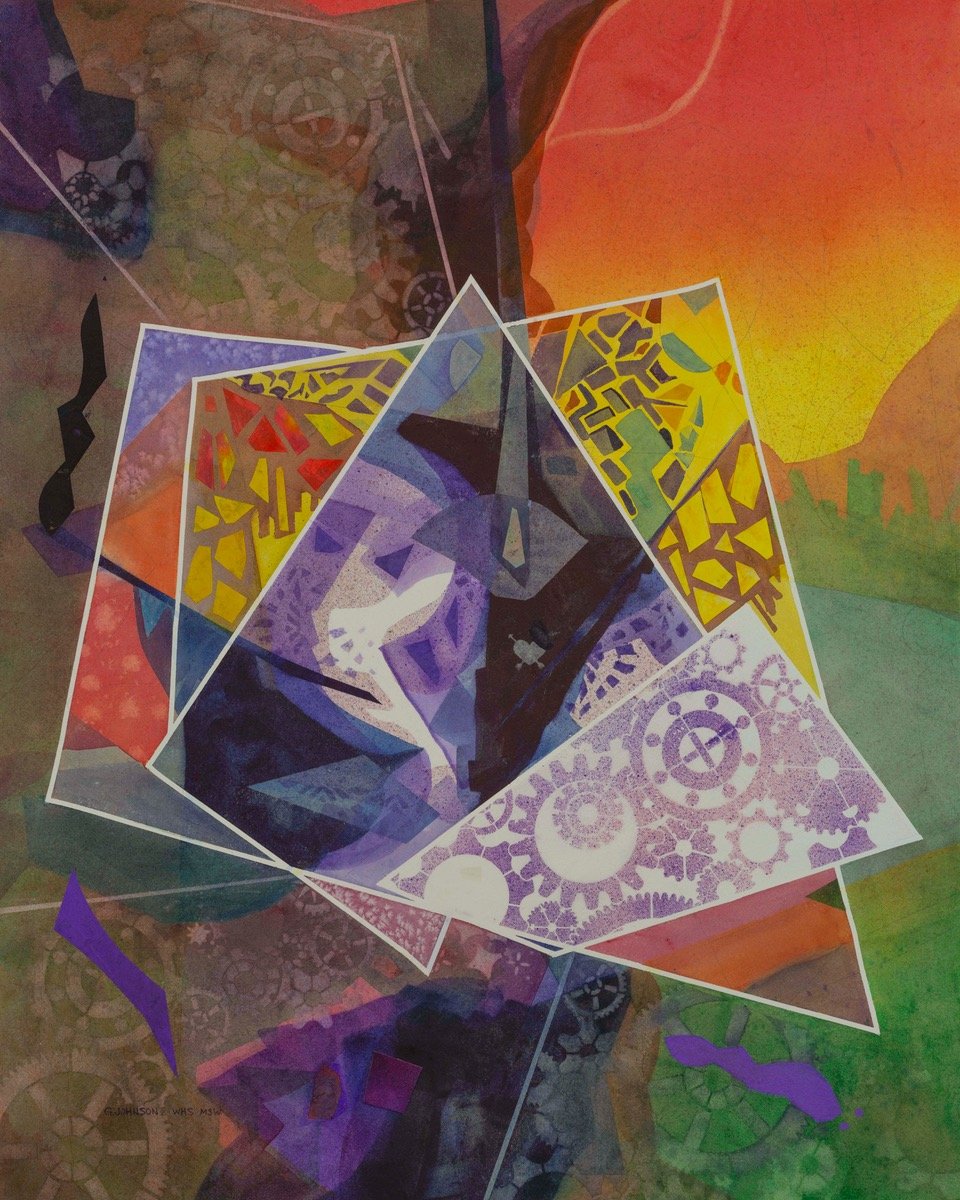
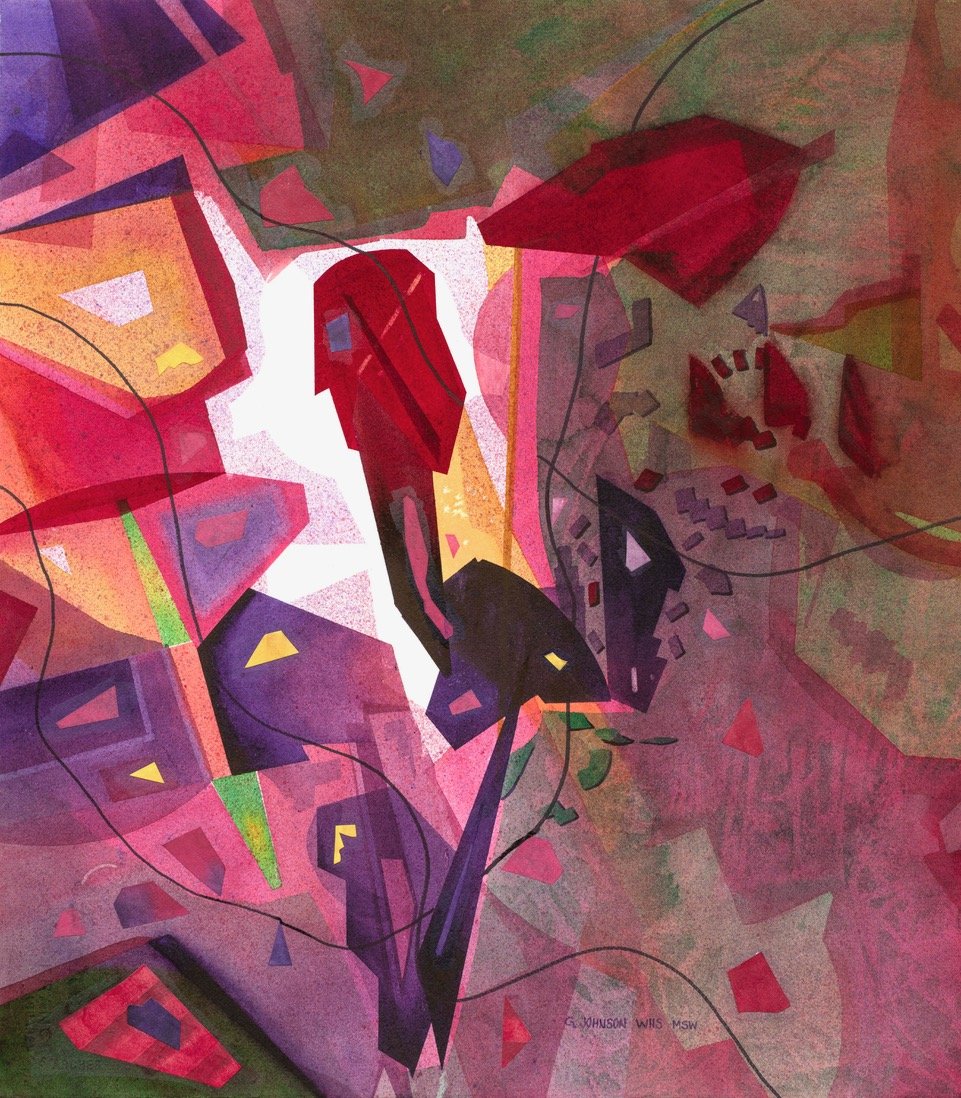
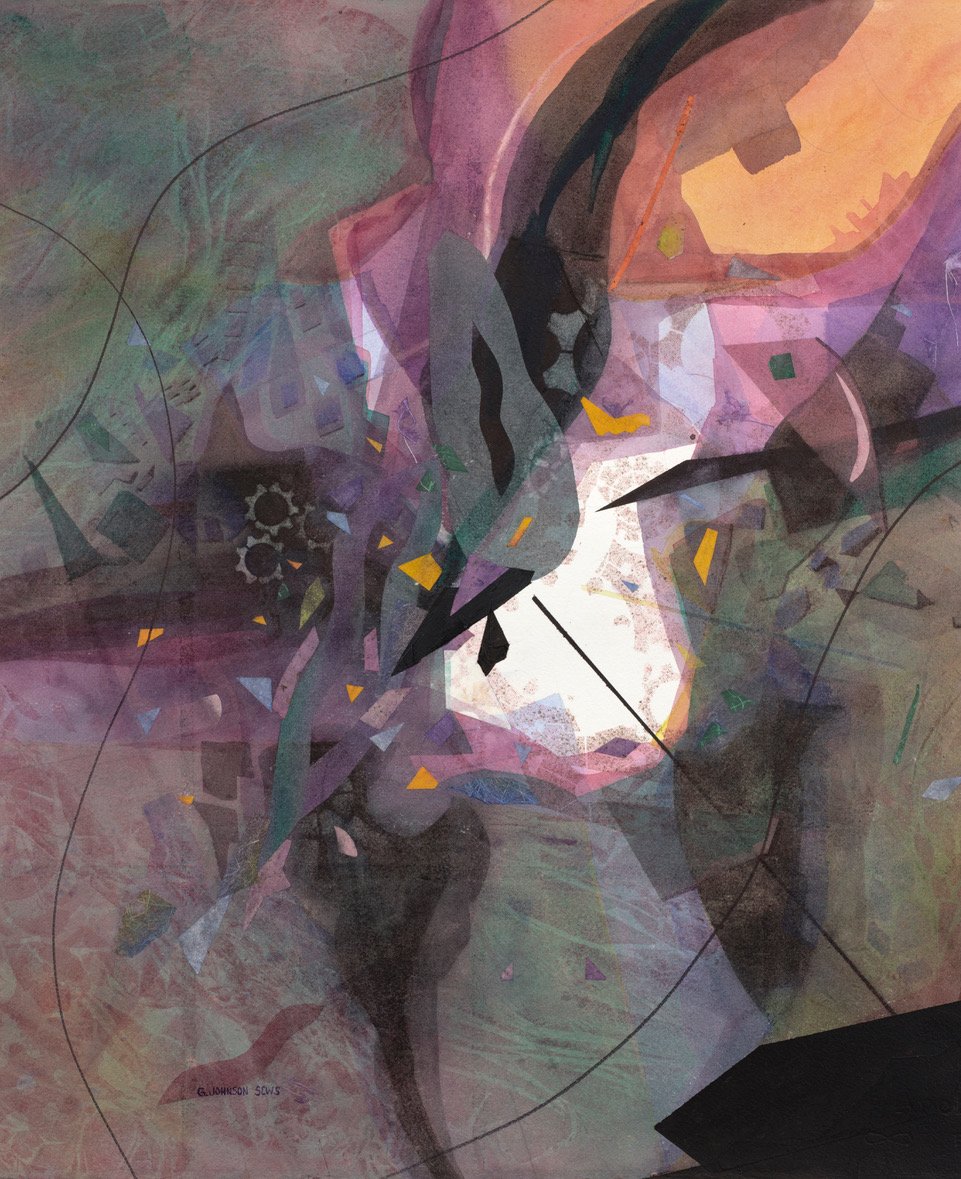
AAS: I have to ask you about Maximus. I love the way you captured his expression and that you let it be the focus of the portrait. Tell me about that painting.
Maximus, 12” x 10”, watercolor
GJ: My wife and I were on a cruise through the Caribbean and as life would have it, we met two sisters who were on the same cruise as us and were table mates right next to us throughout the cruise. As we learned about one another, they learned I was an artist. One of the sisters asked if I could paint a picture of her recently departed dog so she could have a lasting memory of him. She had a couple of pictures of her dog named Maximus and I absolutely had to paint him for her as he had that very charming boxer look. She later sent me the one with a chewy in his mouth and it was the one I selected. I often thought it should be titled “Got a light?” but chose Maximus to honor him for his future life.
Doing commissions is very difficult in my mind because you never really know what the client is looking for in a painting. I usually do several (2-3) quick renderings to give a client a sense of where I might be going with a painting they have asked me to paint. This helps me to gain a sense of whether the client is wanting a replication of a picture or if they want a more loose interpretation of the scene. I once did a commission of an abstract based solely on color choice. I completed it and showed the client who immediately told me she did not like it at all. Wow, that took me aback, so we discussed what it was she wanted even further and it turns out the style of abstract I had done was a bit different that many of my other abstracts and she was wanting something more in line with my designed approach than what I had given her. In the end, I painted her another and she ended up loving it. It takes a lot of questioning of the client to ensure you know, at least somewhat ,what the client wants in a painting.
I enjoy the challenge of commission work, but sometimes commissions can be tedious because you are painting something you may not have ever wanted to paint in the first place. I find now that I have become selective in what commissions I’ll take on.
AAS: You are so very involved in many watercolor societies not just in Arkansas but around the country. How has this enriched your life and your practice?
GJ: The first organization I volunteered for, after relocating to Fayetteville, was the Artists of Northwest Arkansas. I had joined as strictly a member so that I could perhaps show my work in a show or two after we had relocated here and to take a workshop or two. I found out later that they had never had a watercolor workshop and was told if I wanted to have one I needed to become the head of the workshop and put one on. Wow, that took me aback a little, but didn’t deter me from proceeding ahead and getting one organized and put on. I’ve been the head of the watercolor workshops ever since, although I’m about to pass the torch to another very qualified individual so I can spend more time painting.
I’m also involved with two Boards. The Watercolor USA asked me to serve on their board. I am currently filling a role for a member who had to leave for health reasons but I expect to serve another two-year term with next year’s election. I also am the current Chairman of the Board for the Artists of Northwest Arkansas. I’ve served on their Board for about 8 years now and am looking forward to being on the board for another year or two.
I’ve been blessed to also work with an organization called the Schmieding Center for Senior Health and Education. Here I work with seniors who want to learn how to paint with watercolor. I conduct classes once a month for those folks who want to do something they’ve never done before and where they can attend without having to pay a fee. Teaching these seniors has been one of the best things I have ever done as it gave me a chance to give back to the community what I have learned over the years. It’s a form of therapy that I had never considered, but now know how much it helps people as they age.
AAS: Gary, what can we expect next from you?
GJ: As I grow in my career as an artist, I can’t help but think I will continue to take workshops to enhance my skills so I can pass along that knowledge to others through workshops and other volunteer activity. I’m still goal setting and will continue to enter regional, national, and international juried exhibitions which also help me to grow as an artist.
I am just wrapping up a solo exhibition at a really great gallery, the Art Collective in Rogers owned and curated by James Forman. He’s also placed several of my paintings in Bed and Breakfast places in the Bentonville area. I’m hoping to create a few new series of abstracts in the future for another exhibition in the future at his gallery.
I’ve decided to take a workshop on “intuitive abstract” to expand my horizons on abstract. My current abstracts are all done through a design process, although some intuition is involved in moving through the painting. This new process, however, will be a new learning experience for me as there will be no design to start with. It will strictly be moving into the painting without structure. Stay tuned! Who knows where my next experience will come from or who’s path I will cross that leads me in another direction.
